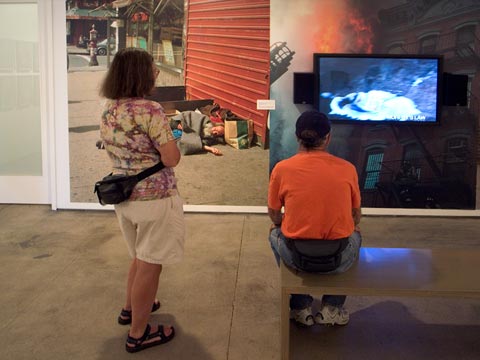
Clayton Patterson exhibition at Kinz, Tillou + Feigen gallery
Recently I went to Clayton Patterson’s exhibit at Kinz, Tillou + Feigen gallery in Chelsea. Patterson has for years chronicled the street culture of the Lower East Side/East Village in film and still photographs. The LES is a neighborhood described more often in the past tense than the present. From its immigrant beginnings to its counter-cultural heyday, it has always been a mythic place. It changes, and it stays the same. There are many different Lower East Sides, and as many different collectors of its memories and images. Patterson represents one stream of memories, one he is very much at the center of.
Patterson ran with the anarchist/squatter crowd on the LES. Others of us were artists or housing activists or garden advocates. Still others were students, new arrivals, the dreaded yuppies, gentrifiers, people with real jobs. The newcomers were most often white or Chinese, who threatened to supplant the Latinos who had replaced the other ethnic groups that had moved out years before. Some of us were overlapping members of these categories. I was a student/artist/housing activist. I ran with the folk music crowd rather than the punk music crowd, but listened to the latter more than the former.
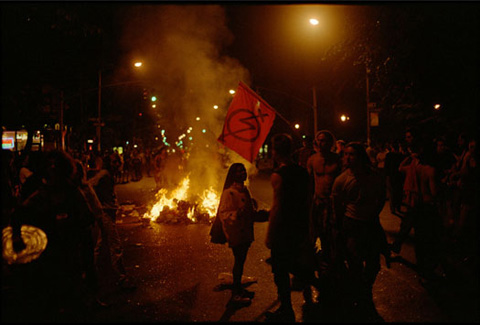
Tompkins Square Riot, 1988, Clayton Patterson
Patterson’s notoriety goes back to the so-called Tompkins Square Park riot, which he videotaped and photographed, and placed himself in the middle of. The park was overrun with the homeless, drug addicts, and post-punk anarchists who hovered about like the earlier denizens of post summer-of-love Haight-Ashbury.
I knew the park well. I played basketball every weekend on the courts at 9th and Avenue B with a regular crew of ex-high school and college players. The mostly Black and Latino hoopsters had nothing to do with the people hanging and living in the park. Worlds overlapped at times, but mostly ran parallel.
Eventually, the community surrounding the park pressed for action, but with little consensus on what should be done. When a curfew was put into place and the police sought to enforce it, there was resistance and open provocation. Police discipline fell apart and a riot ensued in which all kinds of people, residents, passersby, and the curious were caught up in.
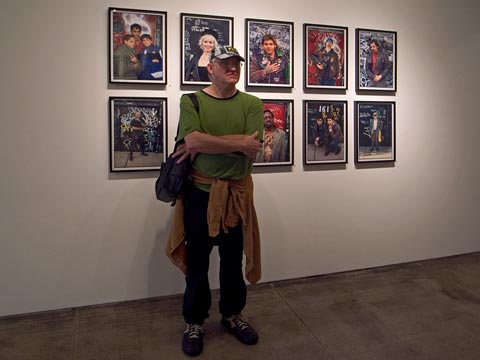
Tim Raymond in front of Clayton Patterson portraits
(Tim is a painter and former resident of Lower Manhattan)
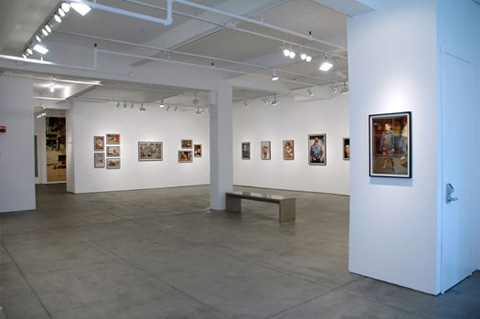
Clayton Patterson exhibition at Kinz, Tillou + Feigen gallery
(image taken from the gallery website)
Only a few images in Patterson’s exhibit concern the riot, but that’s the event that lies at the heart of things. The images of the homeless living in boxes and other documentary photos are lackluster, but the portraits of the kids, the punks, the transvestites, the addicts, the whole panoply of street life that Patterson interacted with are vividly depicted. It’s a pretty well-mannered gallery exhibition, however, for such an unruly artist and such unruly subjects. Patterson has sold out–like we all have to some extent or another. Meanwhile, the Lower East Side still exists–persists–regardless of what people say. The clash of civilizations continues as real estate prices soar into the stratosphere, at least for the newcomers who don’t realize they are latecomers. The rest of us aren’t moving out any time soon.
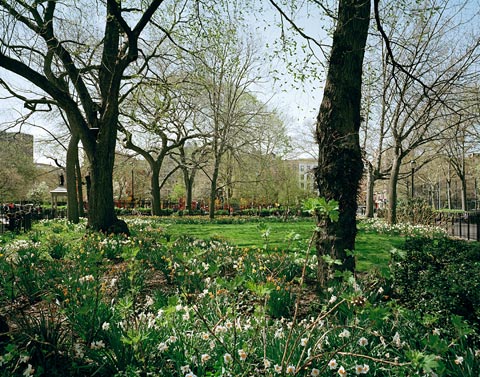
Nice review. I know Clayton & was doing local journalism during the late 80s. Stumbled into the police riot in 1988. Then interviewed Allen Ginsberg (who with friends was chased by mounted cops while walking home that night) a few weeks later.
Here’s the interview:
http://www.newcombat.net/allen_ginsberg_interview.html
Cheers,
B